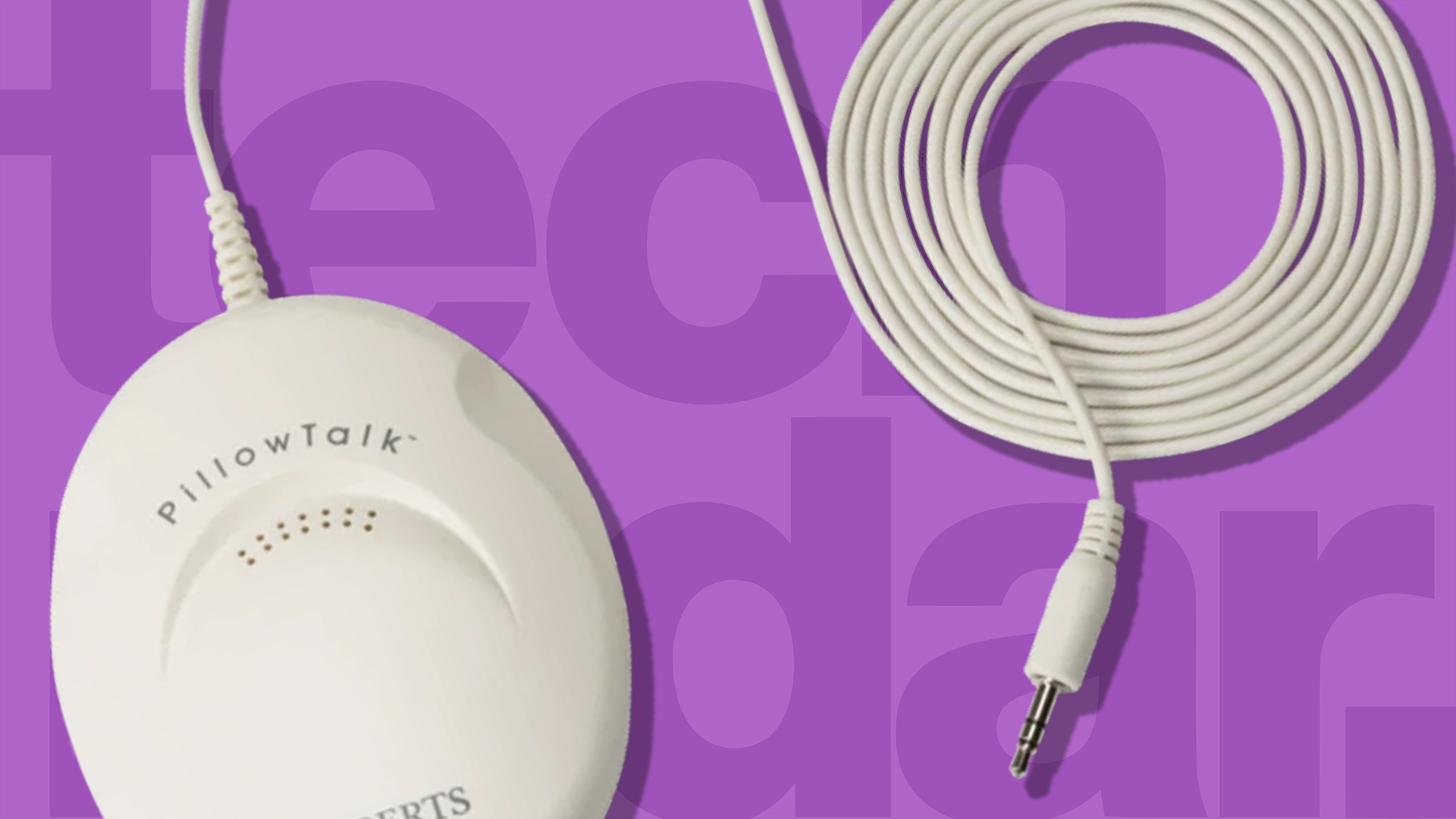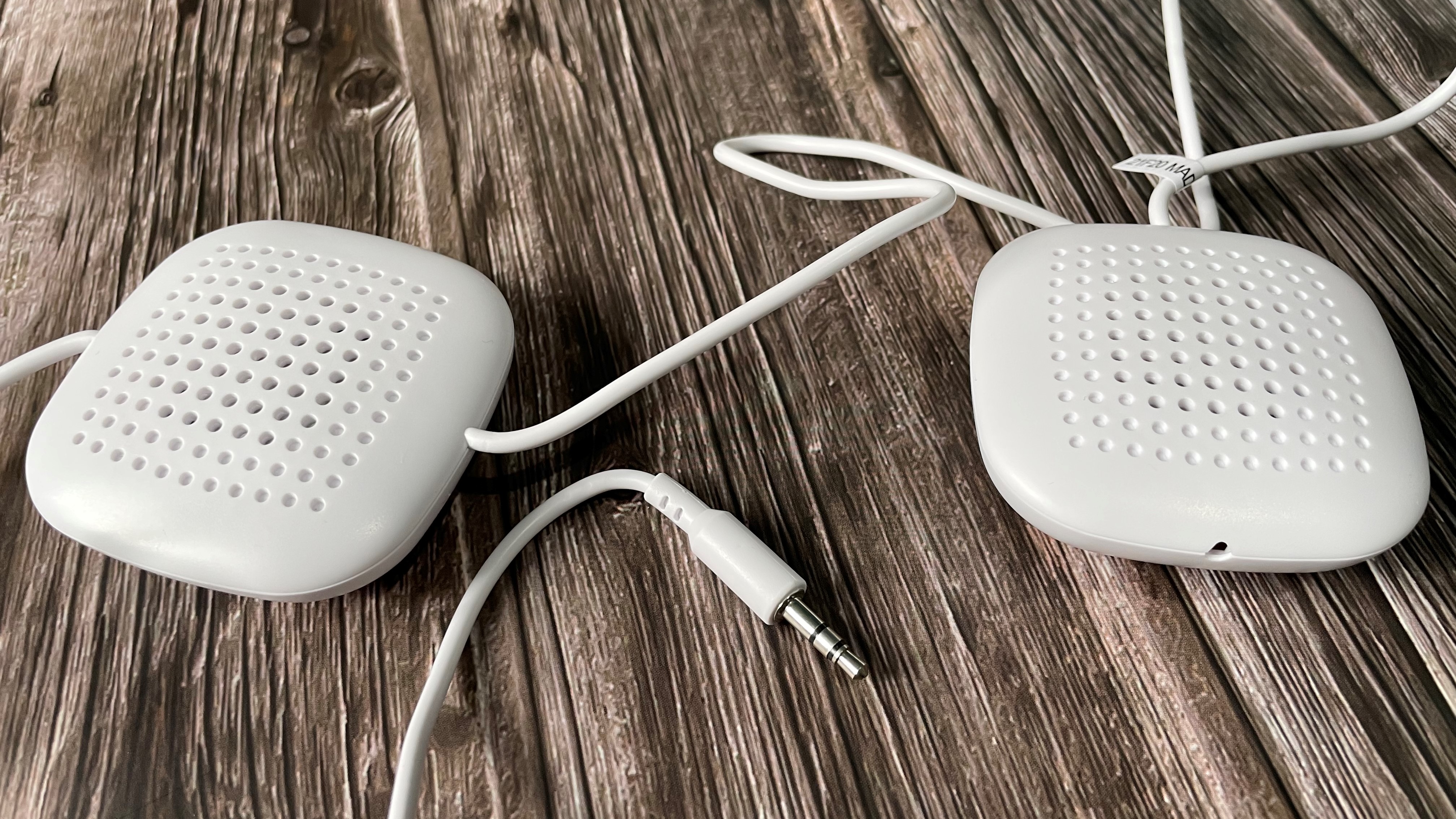Best under-pillow speakers of 2024

Under-pillow speakers are simple, cheap, and can make a huge difference to your sleep if you struggle with tinnitus or find your mind racing at night. As the name suggests, they slide underneath your pillow and transmit sound through the foam or down, straight to your ear. It works surprisingly well, and there's practically no sound leakage to disturb your partner.
Sleep headphones are a great idea, but they're tricky to get right, and some people find sleeping with anything around their head uncomfortable. They also tend to be rather expensive. You can pick up a good under-pillow speaker for a fraction of the price, and because it's so simple, it should last you many, many years.
You'll notice that none of the speakers here are wireless. That's for a very good reason – wireless speakers contain a lithium battery, which can be very dangerous if it overheats. The safe operating range for these batteries is quite narrow, and it could easily get too hot underneath a pillow.
Whether you want to listen to a podcast, ambient noise from an app like Rainy Mood, an audiobook, or some relaxing music, there's an under-pillow speaker for you.
Best under-pillow speakers of 2025 in full:
Why you can trust TechRadar

Specifications
Reasons to buy
Reasons to avoid
The Roberts Radio Pillow Talk Speaker delivers the best sound quality of any under-pillow speaker we've tested. Roberts has brought its decades of experience to bear in this little device (measuring a palm-sized 100mm x 80mm x 26mm), and even through your pillow, it manages to render sound with impressive detail.
That's rare for an under-pillow speaker, and shows that price doesn't always reflect quality. Most similar devices – even those costing several times as much – deliver muddy sound that's acceptable if you just want some ambient noise to help with tinnitus, but not suitable for music or audiobooks. That's not an issue here; settle down for the night and you'll hear your favorite tunes or podcasts almost as clearly as you would through headphones, without the discomfort.
We only have two small complaints about the Roberts Radio Pillow Talk Speaker. First of all, there's no volume control in the cable, so you'll have to adjust the sound on your phone or radio before settling down for the night – a minor quibble but potentially annoying if you wake in the night and want to make a change. Second, there's a small three-position switch on the side of the speaker that doesn't seem to do anything. Roberts says you should choose the setting that gives the best audio for you, but it doesn't have any perceivable effect.
That's not an issue, though; the sound from the Pillow Talk is the best we've heard from any under-pillow speaker, and whatever you like to listen to at night, we think you'll be pleasantly surprised.
Read our full Roberts Radio Pillow Talk Speaker review

Specifications
Reasons to buy
Reasons to avoid
Costing a mere $9.99 / £7.99 (about AU$15), the SoundLAB Pillow Speaker is remarkably cheap, but it's also one of the best.
Its plastic case is a strange 'ivory' shade reminiscent of PC components from the 1990s, and its complete lack of branding is odd, but it's actually very thoughtfully designed. The slightly textured case helps prevent it sliding around underneath your pillow, and the use of speaker grilles on the sides rather than the top means sound isn't muffled en route to your ear.
It has the slim shape you'd expect from an under-pillow speaker, and its flat case is impossible to feel even if you're a light sleeper. Its cable isn't quite as long as that of the Roberts Radio Pillow Talk Speaker, above, but it still gives you plenty of slack to reach from a phone on your nightstand.
It doesn't render high frequencies quite as well as the Pillow Talk, meaning podcasts and audiobooks can sound a little muddy, but very reasonable for the price and superior to the more expensive Sound Oasis Sleep Therapy Pillow Speakers below.
Read our full SoundLAB Pillow Speaker review

Specifications
Reasons to buy
Reasons to avoid
Unlike the others in this guide, which require you to rest your head directly on top, this pair of connected under-pillow speakers can be spaced out so you can hear audio even if you're tossing and turning at night. They don't offer stereo sound for back-sleepers though; if you want that, you'll need to invest a little extra in Sound Oasis' amplified under-pillow speakers, which connect to a mains outlet.
This simple set of speakers were the quietest of all those we tested. That's not a huge problem (after all, your ear is only a few inches away, and you don't want sound leakage to disturb your partner), but we had to turn the volume up to full using the dial integrated into the 2m cable, and turn it almost to maximum on our phone as well.
As with the SoundLAB Pillow Speaker above, higher frequencies are somewhat muffled, but that's not necessarily an issue; if the low frequencies of brown or pink noise help you drift off at night, these little speakers will render it perfectly.
Read our full Sound Oasis Sleep Therapy Pillow Speakers review
This article is part of TechRadar's coverage of Sleep Awareness Week 2022 (running from Sunday 13 March to Saturday 19 March), an annual event hosted by the National Sleep Foundation to emphasize the connection between sleep and health. We've teamed up with experts in their field to bring you proven sleep techniques and tips to help you drift off easier, and have rounded-up the best sleep kit to transform your bedroom into a den of zen.
Sign up for breaking news, reviews, opinion, top tech deals, and more.

Cat is TechRadar's Homes Editor specializing in kitchen appliances and smart home technology. She's been a tech journalist for 15 years, having worked on print magazines including PC Plus and PC Format, and is a Speciality Coffee Association (SCA) certified barista. Whether you want to invest in some smart lights or pick up a new espresso machine, she's the right person to help.